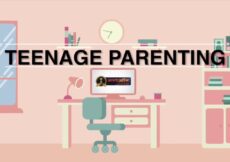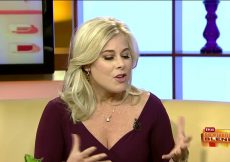According to Stanford Children’s Health, more than three million children in the US suffer from hearing loss, and about 1.3 million of them are under three years. Children with hearing loss, especially those with sensorineural hearing loss (hearing loss in the inner ear due to damaged hair cells or a damaged hearing nerve), can benefit from using hearing aids.
Hearing aids are electronic or battery-operated devices used to amplify sounds for children who have a hearing impairment. A hearing aid is usually suggested for children with sensorineural hearing loss, as this type of hearing loss cannot be cured with medicines or surgery.
Read this post to learn more about the different types of hearing aids and tips on finding the correct hearing aid for your child.
What Are Hearing Aids?
Hearing aids are devices that amplify sounds to help children with hearing impairment listen and speak better. A hearing aid includes a microphone that receives sound and converts it into sound waves. The sound waves are then converted into amplified electrical signals and further back to sound waves. These amplified sounds help the children listen better.
Hearing aids help children communicate better with peers and teachers at school and parents and siblings at home. The main aim of addressing hearing loss in children is to avoid speech and language development delays, improve communication, and reduce academic challenges.
Early intervention can help children develop better social and communication skills. Experts at the Boys Town National Research Hospital suggest that babies as young as two to three months can be provided with hearing aids. Hearing loss is often diagnosed during the newborn hearing screening. This screening test is a common practice in most states of the US.
Types Of Hearing Aids
There are different types of hearing aids, and the child’s audiologist is the best person to suggest a hearing aid for your child while keeping several factors in mind. According to the Baby Hearing Organization, the choice of hearing aid for your child depends on several factors, including
- Physical limitations
- Overall health
- Personal preference
- Degree of hearing loss
- Type of hearing loss
- The durability of the hearing aid
- Post-sale service from the manufacturer
- The compatibility of the hearing aid with other devices
The following are the different types of hearing aids for children.
1. In-the-ear (ITE) hearing aids
ITE hearing aids
- Are designed for people with mild to severe hearing loss.
- Are made of plastic cases.
- Are custom-made to fit the child’s ears.
- Can be paired with other hearing
- Include a telecoil, a device used to enhance sound during phone calls.
- Can be difficult to adjust owing to their small size.
- Can be damaged by ear wax and drainage.
- Are not very suitable for young children as their ears grow quickly.
- Might not be compatible with the frequency modulation (FM) systems often used in FM systems work on principles similar to a radio, meaning the teacher wears a microphone while teaching, and the voice directly reaches the child’s ears via the hearing aid.
2. Behind-the-ear (BTE) hearing aids
BTE hearing aids
- Are used for mild to severe hearing loss.
- Are recommended for babies and children.
- Have larger batteries than ITE hearing aids.
- Send sounds into the ear with the help of an earpiece or a
- Have an earmold that is custom-made from soft plastic to fit inside the ear canal.
- Can be used for a long time, as only the mold needs to be replaced.
- Are compatible with FM systems used in classrooms as well as Bluetooth-compatible.
- Come in various color options.
- Can cause sound to leak out of the child’s ears, leading to an irritating whistling sound in the ear if the mold is poorly fitted.
3. Canal aids
These hearing aids
- Are used for mild to moderate hearing loss.
- Fit directly in the ear canal.
- Are custom-made to fit the size and shape of the child’s ear canal.
- Are difficult to remove and adjust due to their small size and poor grip.
- May get damaged due to ear wax and drainage.
4. Body aids
These hearing aids are
- Used when the child has complete or profound hearing loss.
- Attached to a belt or a pocket and are connected to the ears via wires.
Components Of A Hearing Aid
The various components of a hearing aid and their functions include
- Microphone: It changes sound into electrical energy.
- Amplifiers: It boosts the electrical signals given by the microphone.
- Receiver: It converts the amplified electrical signals back into sound
- Battery: It supplies the necessary power to the hearing aid.
- Earmold: It helps carry the sound waves into the ear canal, keeping the hearing aid in place and preventing leakage of sound waves from the ears, thereby preventing whistling sounds.
- Tubing: It carries sounds from the receiver outlet through the earmold.
- Cord: It carries electrical impulses from the amplifier to the receiver
Pediatric Hearing Aids And Adult Hearing Aids: Differences
According to the Heuser Hearing Institute, hearing aids for children are designed keeping the following features in mind.
1. Tamper proof
Hearing aids for children are usually made with tamper-proof material and feature battery covers, as younger children may consider hearing aids as toys to play with. They might even break them and accidentally ingest a part of it.
2. Pediatric operating systems
Pediatric hearing aids are designed with program settings that are compatible with the unique needs of children.
3. Designed to grow with the child
Children’s ears continue to grow well into their teenage years. So it is best to choose the BTE variant, which can be adjusted according to the changing size and shape of the child’s ears.
4. Ease of operation
Hearing aids for children are designed for easy operation. They are made with soft and comfortable ear molds, and the controls on the device are large enough for the children to see and use.
5. Attractive colors and design
Adults usually choose hearing devices that camouflage their skin. But children may prefer bright colors and flashy designs. Children’s hearing aids come in various colors and designs.
Ensure you let your child choose their hearing aid, as it gives them the confidence to wear the hearing aid they like.
Points To Consider Before Buying A Hearing Aid
Discuss the following points with your child’s doctor and make an informed decision that is the best for your child.
- If surgical treatment or medications would help the child hear better
- The best suitable design for the child’s hearing aid
- If they offer a trial period for a few days
- Costs of different types of hearing aids
- Information about agencies that may assist you with the cost of treatment
- Information about warranty and the availability of after-sales service on repairs, replacements, and spare parts
- Compatibility of the hearing aid with other devices to meet the child’s needs and school requirements
How To Choose The Right Hearing Aid For Your Child
Consider the following factors when choosing the ideal hearing aid for your child.
- The shape of the outer ear should be taken into consideration as BTE hearing aids might not sit well on ears with abnormal shapes.
- Check the depth and length of depression near the ear canals as very shallow ears might not accommodate a hearing aid.
- Take into account the form and severity of the hearing impairment.
- Consider the child’s capability to place and remove the hearing aid.
- Check the amount of ear wax production as too much ear wax can damage the ITE hearing aids.
Maintaining The Child’s Hearing Aid
The audiologist will guide you and the child about using and taking care of the hearing aid. According to the American Speech-Learning-Hearing Association, you must monitor the following things to ensure the smooth functioning of the hearing aid.
- Check the batteries and keep spare or rechargeable batteries available.
- Clean the aid as per the given instructions.
- Ensure that the hearing aid is dry and devoid of any wax, drainage, or dirt.
- Keep the aid away from heat.
- Protect the hearing aid from hair spray or other hair products when using them with the hearing aid in place.
- Learn how to check the aid’s hearing capacity.
- Ask how frequently you need to visit the audiologist for checkups.
Your pediatrician will refer you to an ENT specialist and an audiologist to help you find the best hearing aid for your child. Children with hearing aids may have self-esteem issues and are at a high risk of bullying by peers. Bullying might add a barrier to the positive social, emotional, and educational development of children with hearing impairment. Talk to your child and ask if anything is bothering them. If needed, seek professional help for them.
References:
MomJunction’s articles are written after analyzing the research works of expert authors and institutions. Our references consist of resources established by authorities in their respective fields. You can learn more about the authenticity of the information we present in our editorial policy.



































